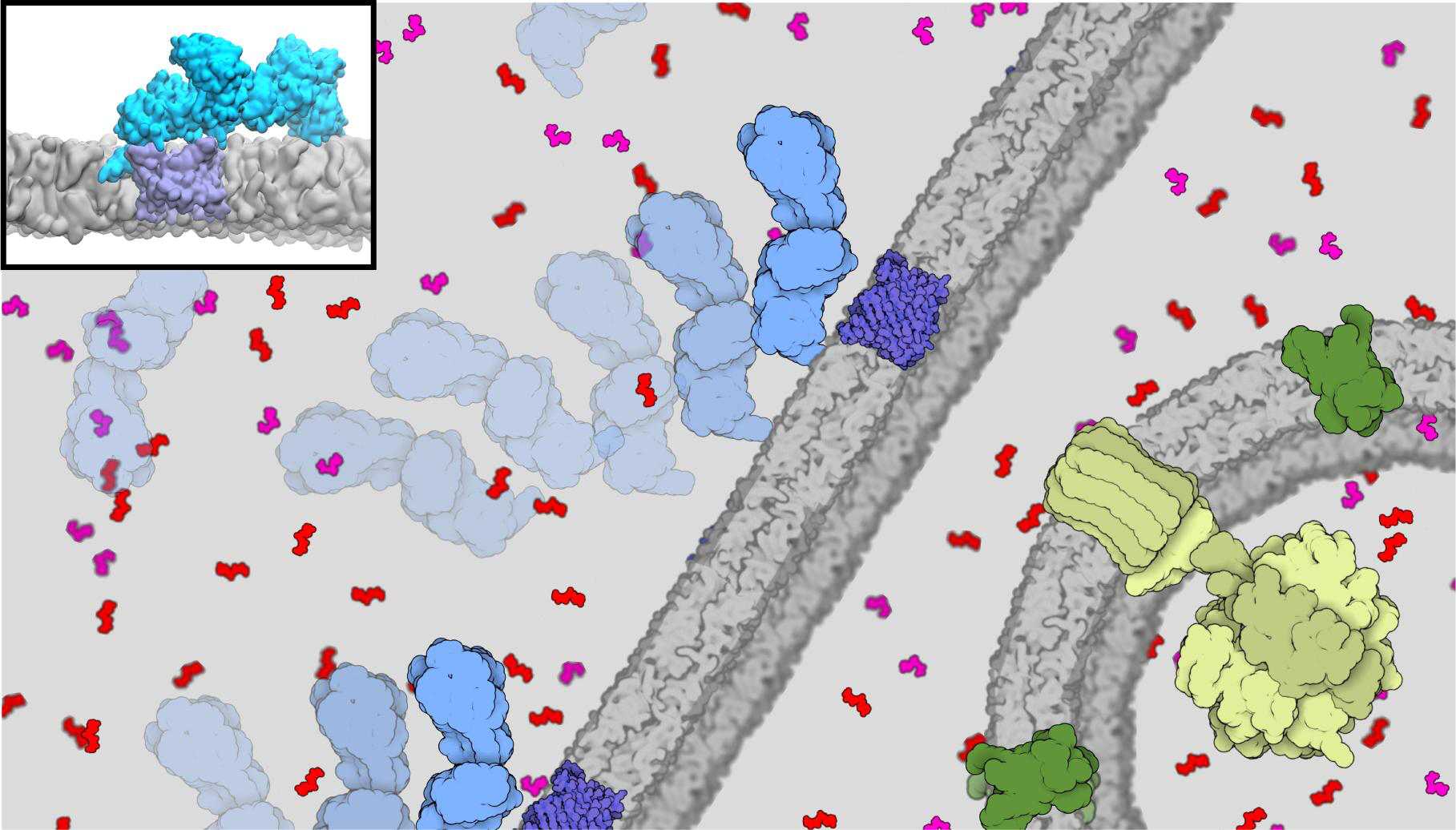Highlights of our Work
2024 | 2023 | 2022 | 2021 | 2020 | 2019 | 2018 | 2017 | 2016 | 2015 | 2014 | 2013 | 2012 | 2011 | 2010 | 2009 | 2008 | 2007 | 2006 | 2005 | 2004 | 2003 | 2002 | 2001
The human body produces its weight of ATP every day.
This universal currency of energy in biology is produced by the powerhouse of the cell, the mitochondrion.
It is then shipped into the cytoplasm of the cell to fuel a myriad of enzymes and biochemical processes
ranging from combustion of sugar molecules to neuronal excitation and muscle movement.
Interaction of the glycolytic enzyme hexokinase-II (HKII) with the mitochondrial ATP channel VDAC1
regulates the metabolism of the cell.
This interaction is amplified in many cancer cells, leading to faster glycolysis and cell growth and proliferation.
Simulations performed by the Center's software combining molecular dynamics NAMD and Brownian dynamics ARBD
show the central role of the membrane in binding of these proteins,
which in turn regulates mitochondrial permeability with direct implications in mitochondria-mediated cell death.
Read more in Communications Biology and Featured articles by TACC's Stampede2 HPC Supercomputers.




